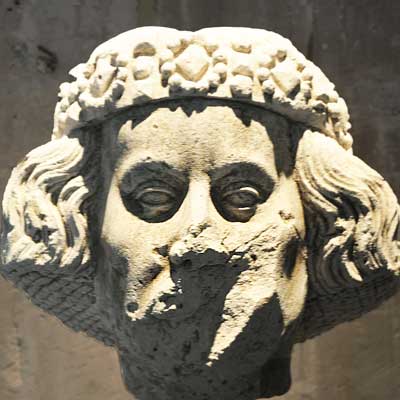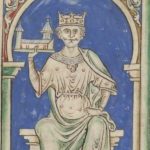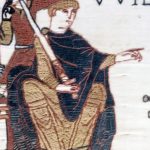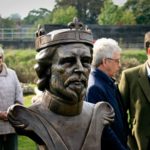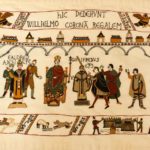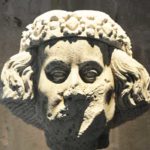William, Duke of Normandy is notorious for his conquest of the Kingdom of England in 1066, an event that earned him the popular title of William the Conqueror. He is an important figure in the history of Berkhamsted Castle.
William was born into Norman nobility, a descendant of the Norsemen who had conquered northern France a century earlier under King Rollo. At the age of 7, William became Duke of Normandy in 1035,
At the time, the Anglo-Saxon King of England, Edward the Confessor, had no children, and this meant that there were several contenders to the Throne of England. Among these were William of Normandy (Edward’s first cousin once removed) and Harold Godwinson (Edward’s brother-in-law). Upon Edward’s death on 5th January 1066, Harold was crowned King of England.
William, convinced that the throne was rightfully his, spent the summer of 1066 amassing a large fleet and an army. In September 1066, William’s forces landed in England. King Harold and his army marched south to repel the Normans, but on 14 October 1066, William’s army defeated them at the Battle of Hastings and King Harold was killed.
William still had to bring the English nobility under his control. Unable to take London, he marched his forces around the Kent coast and up to the Chiltern Hills to attack London from the north. It was on this route that he accepted the surrender of the Saxon establishment. Stigand, the Archbishop of Canterbury, submitted to William at Wallingford in Oxfordshire, and at Berkhamsted Ealdred, Archbishop of York surrendered. Berkhamsted was situated on an important route between London and the Midlands, and the Normans considered it to be a strategically important place for advancing their domination of the land. William ordered this half-brother, Robert of Mortain, to build a castle here, establishing Berkhamsted as a base of regal and military power for several centuries.
On Christmas Day 1066, William was crowned king at Westminster Abbey, the great royal church that King Edward had completed only a year before. The English crown was placed on William’s head by Archbishop Ealdred.
King William I spent most of his reign in Normandy, although in the early years of Norman rule in England, he was actively engaged in brutally suppressing English rebellions. In 1086 William commissioned the Domesday Book, a survey of all the landholdings in England.
William died in September 1087 while leading a military campaign in northern France. He was succeeded by his son, William II.
William’s influence over England was profound. He replaced Anglo-Saxon lords and clergy with loyal Norman aristocracy, and the language of officialdom changed from Old English to Anglo-Norman French. At his command, Norman castles such as Berkhamsted were built across the land.
